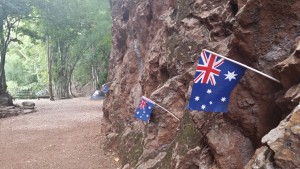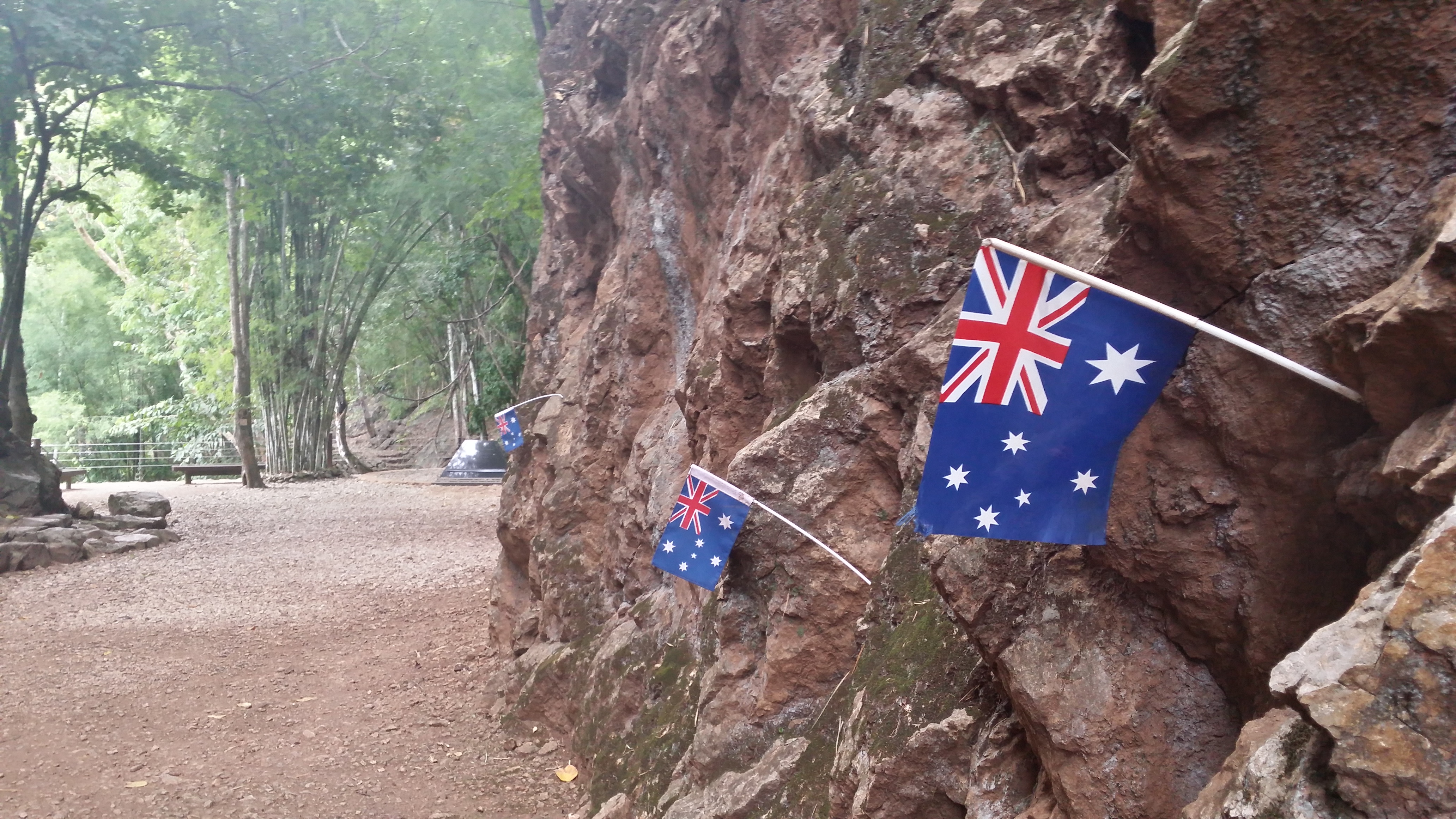 Taking the opportunity to visit Hellfire pass was must for me, more importantly because of my fathers keen interest in all that is relating to Australian war history.
Taking the opportunity to visit Hellfire pass was must for me, more importantly because of my fathers keen interest in all that is relating to Australian war history.
With this in mind, I ventured off mid week to pay my respects. After touring that small museum, which in fact does not hold a lot of items considering the prisoners of war never carried much with them, I started the walk down the long stairs to the first and most photographed section of the railway.
Given my fathers age and ability, he will never get the opportunity to see this first hand, so with the use of technology and good mobile phone coverage, I was able to call him on Skype while making the walk. Because I was on my own, I did the complete walk of the 8km return trip, moving through some of the most dense jungle I have ever seen.
To even try to imagine what these men went through is absolutely impossible. They had make shift radios to try and gather any information of Australian success, whereas today I am taking the walk with my father using Skype so he can hear, see and experience it from his home in Australia.
Some history of Hellfire Pass and the Burma Railway:
The Thai–Burma railway was built in 1942–43 to supply the Japanese forces in Burma, bypassing the sea routes that were made vulnerable when Japanese naval strength was reduced in the Battles of the Coral Sea and Midway in May and June 1942.
Once the railway was completed the Japanese planned to attack the British in India, and in particular the road and airfields used by the Allies to supply China over the Himalayan Mountains. A rail connection between Thailand and Burma had been proposed decades before World War II. In the 1880s the British had surveyed a possible route but abandoned the project because of the challenges posed by the thick jungle, endemic diseases and lack of adequate roads.
 The Japanese also carried out a survey in the 1920s and, after completing a further survey in early 1942, decided in June to proceed, using the large workforce of Allied POWs now at their disposal. At this time Japanese engineers were assisted by small numbers of prisoners marking and roughly clearing the route of the railway.
The Japanese also carried out a survey in the 1920s and, after completing a further survey in early 1942, decided in June to proceed, using the large workforce of Allied POWs now at their disposal. At this time Japanese engineers were assisted by small numbers of prisoners marking and roughly clearing the route of the railway.
Aiming to finish the railway as quickly as possible the Japanese decided to use a massive workforce of prisoners and Asian labourers or rōmusha. The railway was to be constructed by units working along its entire length rather than just from each end.
The terrain the railway crossed made its construction very difficult. However, its route was not entirely the dense and inhospitable jungle of popular imagination. At either end, in Thailand and Burma, the rail track travelled through gentle landscape before entering the rugged and mountainous jungle on the border between the two countries. This railway is what is referred to as the Death Railway.
When the track reached Wampo, about 112 kilometres from the Thai terminus, it started to meet jagged limestone hills, interspersed with streams and gullies. During the monsoon season, the land became waterlogged and unstable. This posed problems for construction as well as for transport and supply.
As far as possible the railway track proceeded at a gentle gradient, as steam trains could only climb a slight incline. Where the railway met unavoidable hills, cuttings were dug to allow the line to proceed. Often the line emerged from a deep cutting onto a series of embankments, and bridges. In all, 688 bridges were built along the railway. In addition, over sixty stations were built to allow trains to pass one another, as well as refuelling and watering points.
More than 60 000 Allied prisoners of war were employed in the construction of the Thai–Burma railway, including British Empire troops, Dutch and colonial troops from the Netherlands East Indies and a smaller number of US troops. About 13 000 of the prisoners were Australian.
[embedyt] http://www.youtube.com/watch?v=EqC79MoJiAQ[/embedyt]
